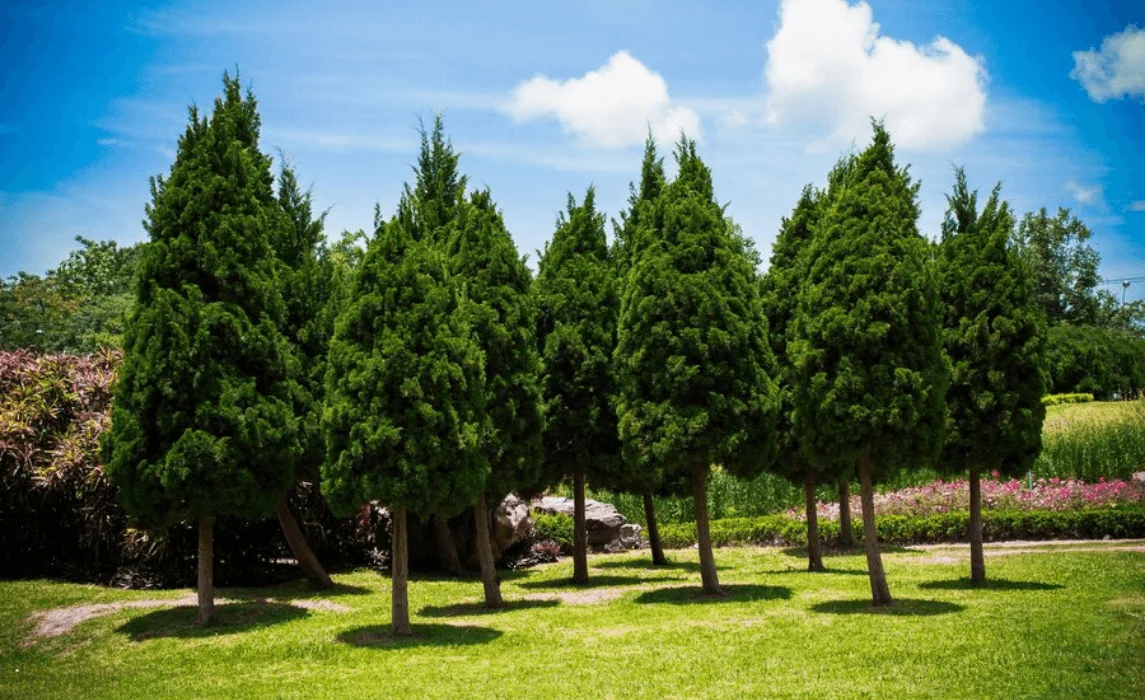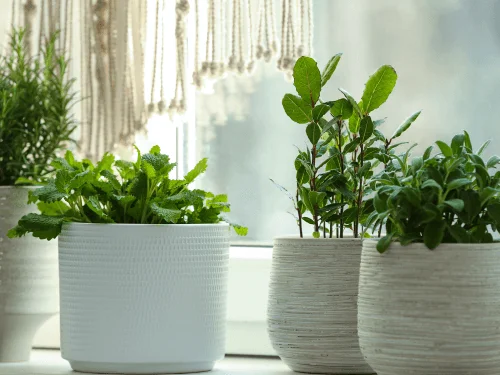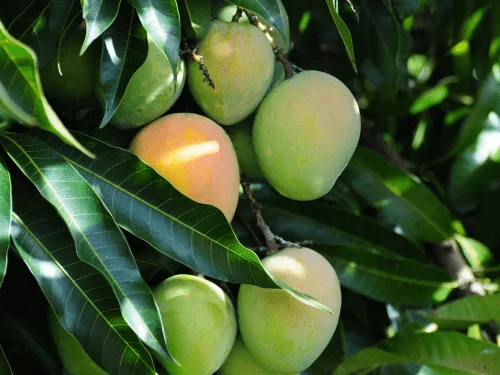Fast-Growing Evergreen Trees: Top Picks for Quick and Beautiful Landscaping

1. Can windowsill plants improve indoor air quality?
Yes, several houseplants, including snake plants, pothos, and spider plants, are known for their air-purifying abilities, removing toxins such as formaldehyde and benzene from indoor air. While plants won’t replace proper ventilation, they do contribute to improved air quality and add natural humidity to dry indoor environments.
2. How can I keep my windowsill plants healthy in winter?
During winter, light intensity decreases, and indoor heating can dry the air. Place your plants on windowsills with maximum sunlight, avoid overwatering, and increase humidity using a tray of water or a small humidifier. Sensitive flowering plants like geraniums or African violets may benefit from supplemental grow lights to maintain bloom and foliage quality during shorter winter days.
3. Can I grow flowering and foliage plants together on the same windowsill?
Yes, but pay attention to their light and water requirements. Group plants with similar needs—sun-loving succulents together and shade-tolerant foliage like snake plants and pothos separately. This prevents overwatering or underexposure and ensures all plants thrive. Rotating flowering plants occasionally can also help blooms develop evenly.
Can mango trees be grown in pots?
A: Yes, potted mango trees require large containers with well-draining soil. Regular repotting and sunlight exposure are essential to grow a healthy mango tree in a pot.
Can mango trees grow indoors?
A: Yes, young mango trees can grow indoors in large pots with sufficient sunlight or grow lights. Indoor mango trees may take longer to flower and fruit but are manageable with proper care.
How do I grow mango trees from seed faster?
A: Using warm conditions, consistent moisture, and polyembryonic seeds can speed up germination. Grafting onto seedling rootstocks is another method to grow mango trees faster and ensure quality fruit.
When do mango trees produce fruit?
A: Grafted mango trees may bear fruit in three to five years, while seed-grown trees may take five to eight years. Flowering and fruiting are influenced by climate, sunlight, and proper mango tree care.
1. How long does it take for daisies to bloom?
Plants grown from seed may take several weeks to produce their first flower buds. Most daisy plants will start to bloom in early summer, and with deadheading, they can produce a third blooming later in the season. Shasta daisies and oxeye daisies are especially reliable bloomers that can flower continuously throughout the season if given care tips such as fertilizing and proper watering.
2. Can daisies be grown in pots?
Yes! Potted plants are ideal if you have limited garden space. Make sure the pot has drainage holes and use well-draining garden soil. Daisies are also happy in containers if they get enough hours of full sun. Remember to monitor moisture: avoid too much moisture at the bottom of the pot.
3. What are the best companion plants for daisies?
Daisies pair well with bee balm, echinacea, and zinnias. These companion plants share similar sunlight and watering needs, helping your garden flourish throughout the season. They can also create a beautiful mix of single or double flowers alongside bright white petals of daisies.
Evergreen trees are prized for their year-round foliage and ability to provide continuous greenery, privacy, and windbreaks. When considering fast-growing varieties, gardeners can achieve these benefits in a shorter time.
I remember the day I planted a row of fast-growing spruce trees along my driveway. My goal was to create a natural screen for privacy, and I was eager to see results quickly. Within just a few seasons, the spruces had transformed the space, giving me the seclusion I wanted and a beautiful backdrop for my garden. It was incredibly rewarding to witness how swiftly these trees could make such a significant impact.
This article explores over ten fast-growing evergreen tree varieties, detailing all of their aspects.
Ten Fast-growing Evergreen Tree Varieties

Here are ten fast-growing evergreen tree varieties that can provide year-round greenery:
1. Leyland Cypress (Cupressus × leylandii)

The Leyland Cypress is a popular hybrid evergreen tree resulting from the cross between the Monterey Cypress and the Alaskan Cedar. It is widely used for privacy screens and windbreaks due to its rapid growth and dense foliage. Leyland Cypress can grow up to 60-70 feet in height and 15-25 feet in width, with dark green, feathery leaves that are soft to the touch. The tree forms a conical shape with dense, overlapping branches. This tree can grow up to 3-5 feet per year under optimal conditions and is known for its fast and upright growth pattern. Leyland Cypress thrives in full sun and well-drained soil, and it is tolerant of a variety of soil types, including clay and sandy soils. Regular watering during the first few years is essential to establish a strong root system, but once established, it is drought-tolerant. It is hardy in USDA zones 6-10, capable of withstanding mild to moderate winters. This tree is recommended for gardeners looking for a fast-growing privacy screen or windbreak.
2. Green Giant Arborvitae (Thuja standishii × plicata)

Link: https://www.flickr.com/photos/50697352@N00/40043283873
The Green Giant Arborvitae is a hybrid between the Western Redcedar and Japanese Arborvitae, renowned for its rapid growth and adaptability. This tree can reach heights of 50-60 feet and a spread of 12-20 feet, featuring rich green, scale-like leaves and a pyramidal shape. Green Giant Arborvitae grows at a rate of 3-5 feet per year, making it one of the fastest-growing evergreens. It prefers full sun to partial shade and well-drained, fertile soil. Regular watering is important during the establishment phase, and once established, it is relatively drought-tolerant. Hardy in USDA zones 5-8, it can withstand a range of climatic conditions. This tree is recommended for gardeners seeking a robust and low-maintenance privacy screen.
3. Eastern White Pine (Pinus strobus)

Link: https://commons.wikimedia.org/wiki/File:Eastern_White_Pine_(Pinus_strobus)_-_Killarney,_Ontario_02.jpg
The Eastern White Pine is native to eastern North America and is valued for its rapid growth and versatility. This pine tree can grow up to 80 feet tall and 20-40 feet wide, with soft, blue-green needles grouped in clusters of five and long, slender cones. It grows at a rate of 2-3 feet per year, developing a tall, straight trunk and broad, horizontal branches. Eastern White Pine thrives in full sun and well-drained, acidic soil. Regular watering during the first few years is crucial, and full sun is best for its growth. Hardy in USDA zones 3-8, it tolerates a wide range of temperatures. This tree is recommended for gardeners looking for a tall, fast-growing tree for windbreaks or large landscapes.
4. Italian Cypress (Cupressus sempervirens)

The Italian Cypress is native to the Mediterranean region and is known for its tall, slender form and rapid growth. This tree can grow up to 40-60 feet tall and only 3-6 feet wide, with dark green, dense foliage forming a narrow, columnar shape. Italian Cypress grows at a rate of about 2-3 feet per year, maintaining its narrow, upright form. It prefers full sun and well-drained soil and is drought-tolerant once established. Regular watering during the first few years is essential, but it becomes drought-tolerant over time. Hardy in USDA zones 7-10, it prefers warm climates. This tree is recommended for gardeners seeking vertical accent trees for formal gardens or narrow spaces.
5. Norway Spruce (Picea abies)

Link: https://commons.wikimedia.org/wiki/File:2017-03-23_17_07_14_Norway_Spruce_along_Hidden_Meadow_Court_in_the_Franklin_Farm_section_of_Oak_Hill,_Fairfax_County,_Virginia.jpg
The Norway Spruce is native to Europe and is known for its impressive size and conical shape. This tree can grow up to 40-60 feet tall and 25-30 feet wide, with dense, dark green needles that create a broad, pyramidal form. Norway Spruce grows at a rate of about 1-2 feet per year, gradually expanding its width as it matures. It prefers full sun to partial shade and well-drained soil, and is tolerant of a range of soil conditions. Regular watering is important during the tree’s early years, but it is relatively drought-tolerant once established. Hardy in USDA zones 3-7, it adapts well to cooler climates. This tree is recommended for gardeners seeking a large, robust evergreen for shelterbelts, windbreaks, or expansive landscapes.
6. Eucalyptus Tree (Eucalyptus spp.)

Link: https://www.flickr.com/photos/arthur_chapman/26393684473
Eucalyptus trees are native to Australia and are known for their rapid growth and aromatic foliage. These trees can grow up to 60-90 feet tall, with long, narrow leaves that are blue-green in color and smooth bark that often peels in strips. Eucalyptus trees can grow up to 6-8 feet per year, making them one of the fastest-growing evergreens. They thrive in full sun and well-drained soil and prefer warm climates. Regular watering during the first few years is crucial, but they are drought-tolerant once established. Hardy in USDA zones 8-11, they prefer warm, arid climates. These trees are recommended for experienced gardeners looking for a fast-growing tree for large landscapes.
7. Cryptomeria (Cryptomeria japonica)

Link: https://commons.wikimedia.org/wiki/File:Cryptomeria_japonica_tree.jpg
Cryptomeria, also known as Japanese Cedar, is native to Japan and China. It is valued for its rapid growth and ornamental appeal. This tree can grow up to 50-60 feet tall and 20-30 feet wide, with dense, bright green foliage that turns bronze in winter. Cryptomeria grows at a rate of 2-3 feet per year, forming a conical shape. It prefers full sun to partial shade and well-drained, acidic soil. Regular watering during the first few years is essential, and full sun to partial shade is ideal for its growth. Hardy in USDA zones 5-9, it prefers humid climates. This tree is recommended for gardeners looking for a fast-growing tree with year-round interest.
8. American Arborvitae (Thuja occidentalis)

Link: https://www.flickr.com/photos/50697352@N00/49125393892
American Arborvitae, also known as Northern White Cedar, is native to North America and is popular for its dense, evergreen foliage and fast growth. This tree can grow up to 40-60 feet tall and 10-15 feet wide, with soft, scale-like leaves that are bright green. It grows at a rate of 1-2 feet per year, forming a narrow, pyramidal shape. American Arborvitae prefers full sun to partial shade and well-drained soil. Regular watering during establishment is important, and once established, it adapts well to different conditions. Hardy in USDA zones 3-7, it tolerates cold climates. This tree is recommended for gardeners seeking a cold-hardy, fast-growing privacy hedge.
9. Carolina Sapphire Cypress (Cupressus arizonica var. glabra 'Carolina Sapphire')

Link: https://commons.wikimedia.org/wiki/File:Cupressus_glabra_Blue_Ice1.jpg
Carolina Sapphire Cypress is a cultivar of Arizona Cypress, known for its rapid growth and striking blue-gray foliage. This tree can grow up to 40-50 feet tall and 20-30 feet wide, with soft, blue-gray leaves and a conical shape. It grows at a rate of 2-3 feet per year and prefers full sun and well-drained soil. Regular watering during the first few years is crucial, but it becomes drought-tolerant once established. Hardy in USDA zones 7-9, it prefers warm, dry climates. This tree is recommended for gardeners looking for a fast-growing tree with unique foliage color.
10. Japanese Cedar (Cryptomeria japonica 'Yoshino')

Link: https://commons.wikimedia.org/wiki/File:Cryptomeria_japonica_-_Marburg_001.jpg
Yoshino Japanese Cedar is a cultivar of Cryptomeria japonica, known for its rapid growth and attractive form. This tree can grow up to 30-40 feet tall and 15-20 feet wide, with dense, bright green foliage that turns bronze in winter. It grows at a rate of 2-3 feet per year, forming a conical shape. Yoshino Japanese Cedar prefers full sun to partial shade and well-drained, acidic soil. Regular watering during the first few years is important, and full sun to partial shade is ideal for its growth. Hardy in USDA zones 6-9, it prefers humid climates. This tree is recommended for gardeners looking for a fast-growing tree with year-round interest.
Frequently Asked Questions and Answers:
Q: Can evergreen trees grow in shade?
A: Some evergreen trees, such as American Arborvitae and Green Giant Arborvitae, can tolerate partial shade, but most prefer full sun for optimal growth.
Q: How often should I water newly planted evergreen trees?
A: Newly planted evergreen trees should be watered regularly, especially during the first few years, to establish a strong root system.
Q: What type of soil is best for evergreen trees?
A: Most evergreen trees prefer well-drained soil. Some varieties, like the Eastern White Pine, prefer acidic soil, while others, like the Italian Cypress, can tolerate a range of soil types.
Q: How can I protect my evergreen trees in winter?
A: Mulching around the base of the tree can help protect the roots from freezing. It's also important to water the trees well before the ground freezes to prevent winter drought.




